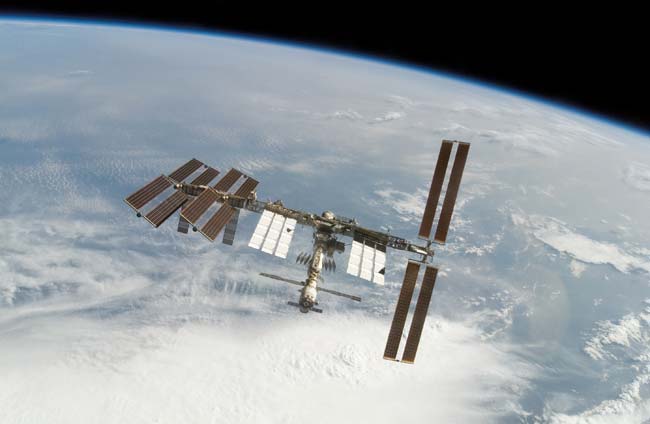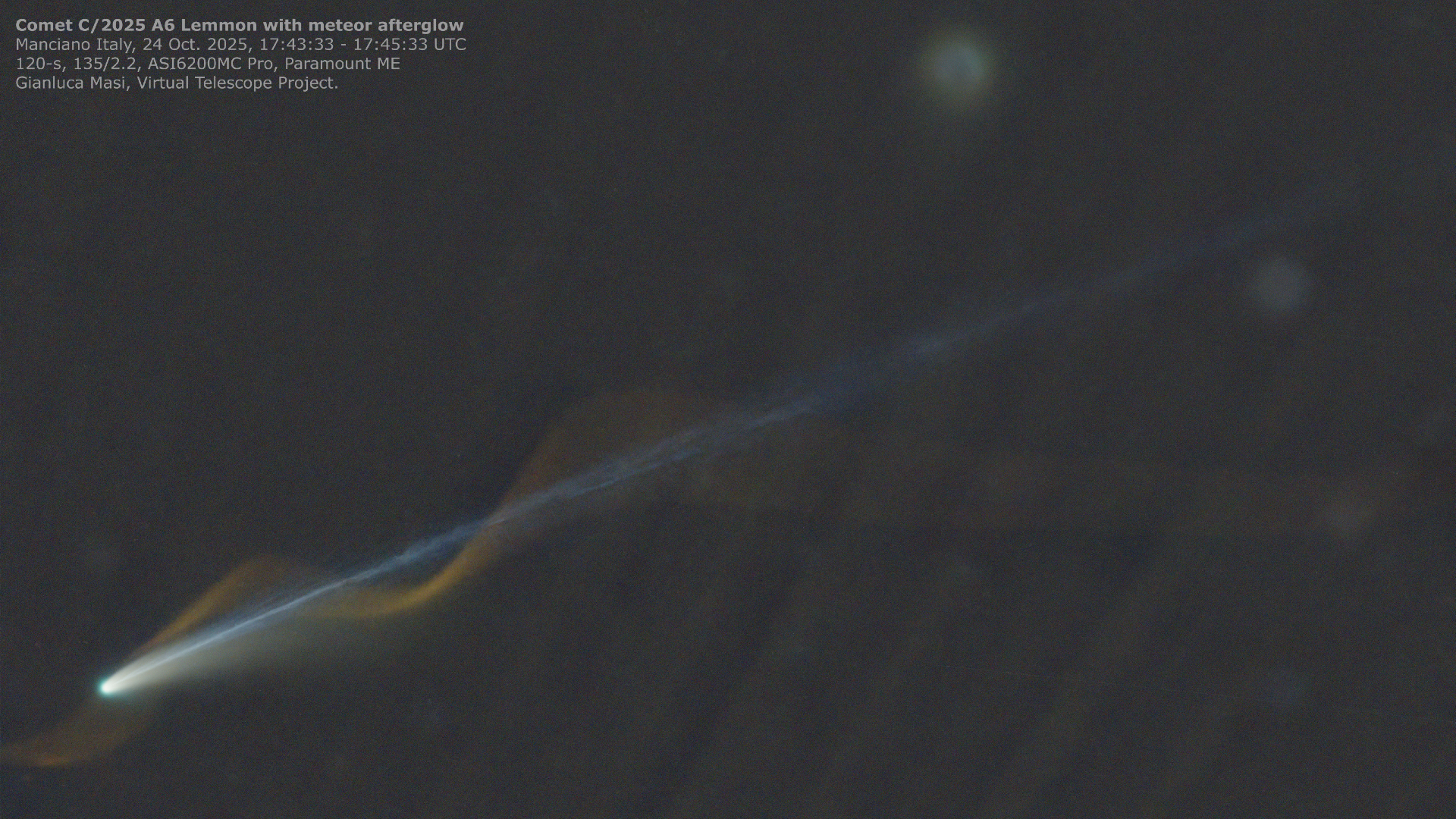Shuttle Endeavour to Dock at Space Station Tonight

This story was updated at 5:30 p.m. ET.
HOUSTON ? Space shuttle Endeavour and its astronaut crew will finish an orbital pursuit of the International Space Station (ISS) this evening, poising themselves to deliver Japan's first orbital room and a giant two-armed robot.
Theseven-astronaut STS-123shuttle crew led by commander Dominic Gorie are due to dock with the spacestation around 11:25 p.m. EDT (0325 GMT March 13) this evening. Gorie, who ismaking his fourth spaceflight, will maneuver the 100-ton orbiter into positionat the orbital outpost.
"Thatis one of the most exciting parts of the mission for me," Gorie said in apreflight NASA interview. "Knowing that there?s this space station crew onthe other side waiting for our arrival ... makes it a really exciting time aswell."
The crewawoke today to the battle scene song from the movie "Godzilla Vs. SpaceGodzilla," followed by the Blue Oyster Cult's radio hit"Godzilla."
"Good morningEndeavour. Doi san, ohayo gozaimasu," said Alvin Drew, shuttle spacecraftcommunicator, to Japanese astronaut Takao Doi from Mission Control here in Houston. "Take on today like a monster."
"We are very happy tohear Godzilla," Doi responded. "We are ready to go and we'll have agreat time today docking with the space station."
Breaking space news, the latest updates on rocket launches, skywatching events and more!
Crewswap
Once thehatches separating the two crews are opened tonight, STS-123 mission specialistGarrett Reisman will replace European Space Agency (ESA) astronautLeopold Eyharts, who has lived aboard the station since early February 2008as part of its Expedition 16 crew.
Sincearriving, Eyharts has been busy configuring and conducting experiments insideof the ESA's 11.4-ton Columbuslaboratory module.
Reisman isslated to stay on orbit until the STS-124 mission crew takes him home in June.
"I'vehad such a good time as part of this this crew," Reisman said of hisshuttle colleagues before launch. "I think when it's time to close thehatches, I'm going to be looking around saying 'where are you guys going, whyare you leaving me here?'"
Orbitalacrobatics
BeforeEndeavour makes the on-orbit crew swap, however, Gorie will pilot the shuttlethrough a 360-degree backflip about 600 feet (183 meters) below the orbitallaboratory.
The rendezvouspitch maneuver (RPM), as it is known, will expose the shuttle's heat-resistantunderbelly so that space station commander Peggy Whitson and her crewmates canphotograph it with high-powered digital cameras.
Gorie saidthe enormous lenses used by the station crew are like those "you see outat the end of the football field in the end-zone," and will show anychinks or damage to the heat-resistant tiles covering the shuttle's underside.
"Thosecameras, they are able to detect whether there?s any white tile showing on thesurface of the orbiter," Gorie said. "That would mean that the blackcoating on the belly tiles has been damaged and then we can go out and inspectfurther later on in the mission."
Debrisdata
The imageswill complement asix-hour inspection of the shuttle's wing leading edges and nose cap thatGorie, Reisman and Doi finished early Wednesday.
The crewalso has some time reserved for a focused inspection on Friday, if required,and will perform a second survey to check for dings by orbital debris andmicrometeorites before undocking next week.
LeRoy Cain,chair of NASA's mission management team, said Wednesday afternoon that launch photos show potential debris at 10 seconds and 83 seconds after the shuttle's liftoff. Although Cain thinksthe events probably didn't damage Endeavour's heat shield, he noted thatengineers will continue to pore over the inspection data and take advantagethis evening's RPM photos.
"We'lllet the process take its toll and let the experts analyze it," Cain saidof heat shield analysis procedures. "We'll react to ? data as we seeit."
On-orbitdelivery
Almostimmediately after latching onto the space station tonight, Endeavour astronautswill grapple a Spacelab pallet containing the pieces of the 1.72-ton Dextrerobot, then secure it onto part of the station's backbone-like truss tomake room for the unberth and install of the Japanese Logistics Pressurizedmodule, or JLP.
The dayafter docking, Reisman and fellow mission specialist Rick Linnehan will ventureoutside of the space station to install it.
"Itwill be a momentous moment for Japan," Doi said of his nation's firstorbital room.
NASA is broadcastingEndeavour's STS-123 mission live on NASA TV. Click here for SPACE.com'sshuttle mission coverage and NASA TV feed.
- NEW VIDEO: Danger on the Pad: Shuttle Astronauts Practice Escape Drill
- VIDEO: ESA's New Science Laboratory
- VIDEO: Part 1: Europe's First ISS Cargo Ship, Part 2
Join our Space Forums to keep talking space on the latest missions, night sky and more! And if you have a news tip, correction or comment, let us know at: community@space.com.
Dave Mosher is currently a public relations executive at AST SpaceMobile, which aims to bring mobile broadband internet access to the half of humanity that currently lacks it. Before joining AST SpaceMobile, he was a senior correspondent at Insider and the online director at Popular Science. He has written for several news outlets in addition to Live Science and Space.com, including: Wired.com, National Geographic News, Scientific American, Simons Foundation and Discover Magazine.
